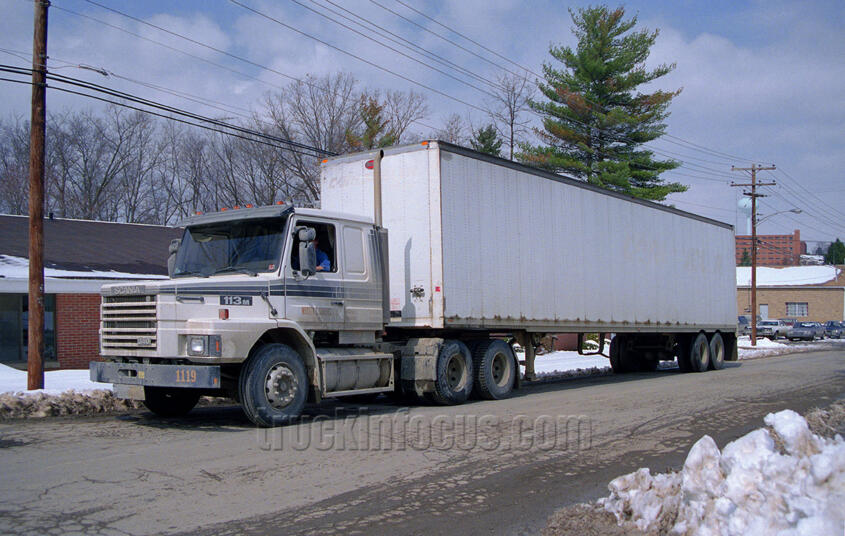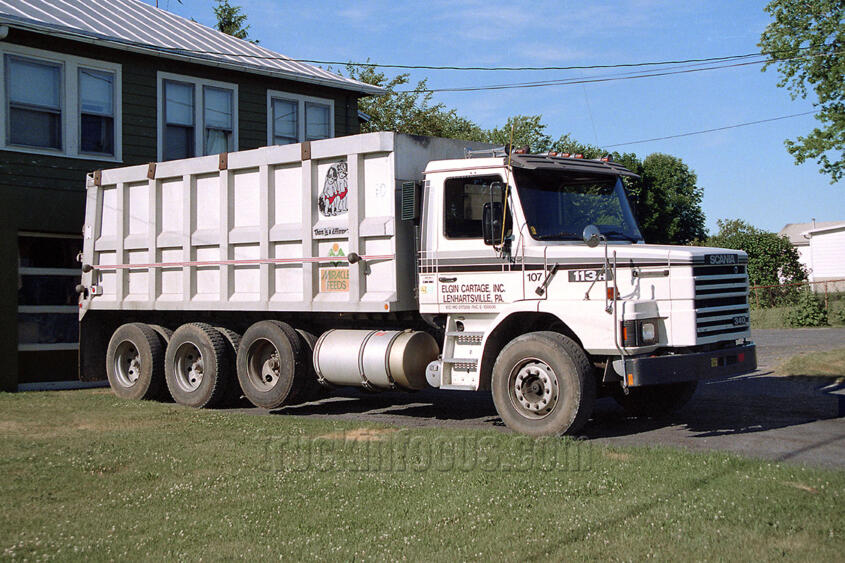The Scania Chronicle
Page 7
By Christoph Büch and Steve St.Schmidt (Berlin 2023)
Series 3 from 1988:
"Streamline" as an option
In 1988, little changed on the outside. To the left of the right headlight (seen from the outside) was now the engine output in horsepower. On the Series 2 vehicles, a "V8" logo had only been placed there on the top models to indicate the prestigious large engine.
In technical terms, however, the Series 3 scored points with continuously refined vehicles, new engines and gearboxes as well as an improved interior. The engines were gradually equipped with electronically controlled fuel injection. The system, which Scania was one of the first manufacturers to develop, was called Electronic Diesel Control (EDC). The large V8 engine was boosted to 470 hp and there was now a Top Line cab with greater interior height for long-distance transport.
In 1989, the engine output of the top-of-the-line model increased to 470 hp and the 3 series was voted "Truck of the Year", with the Mercedes SK taking second place.
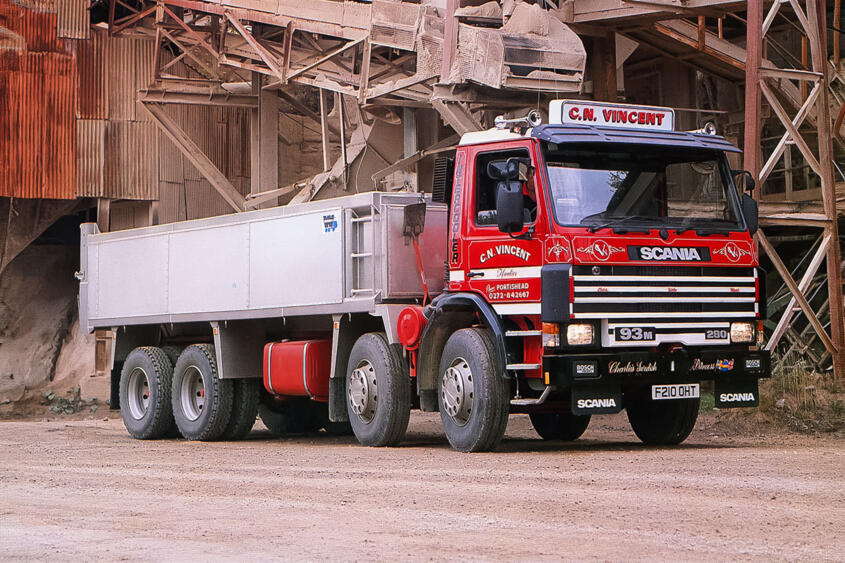
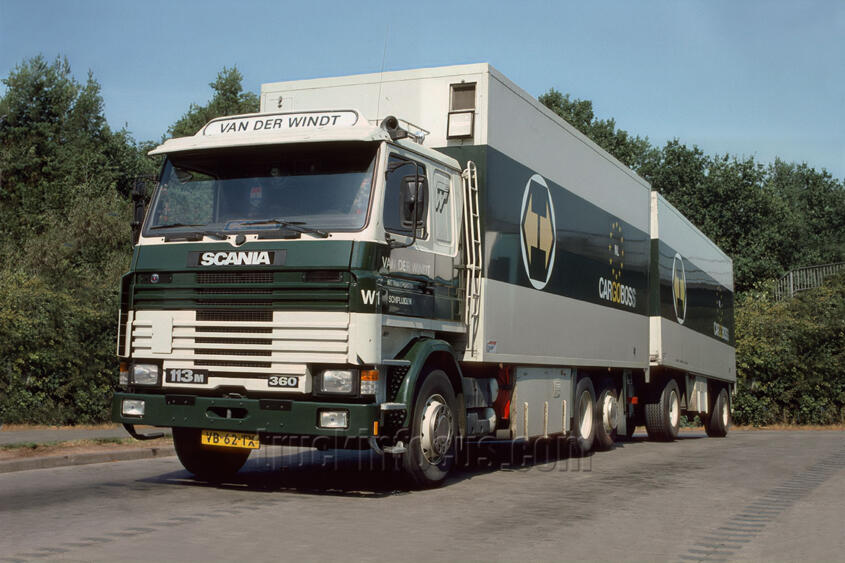
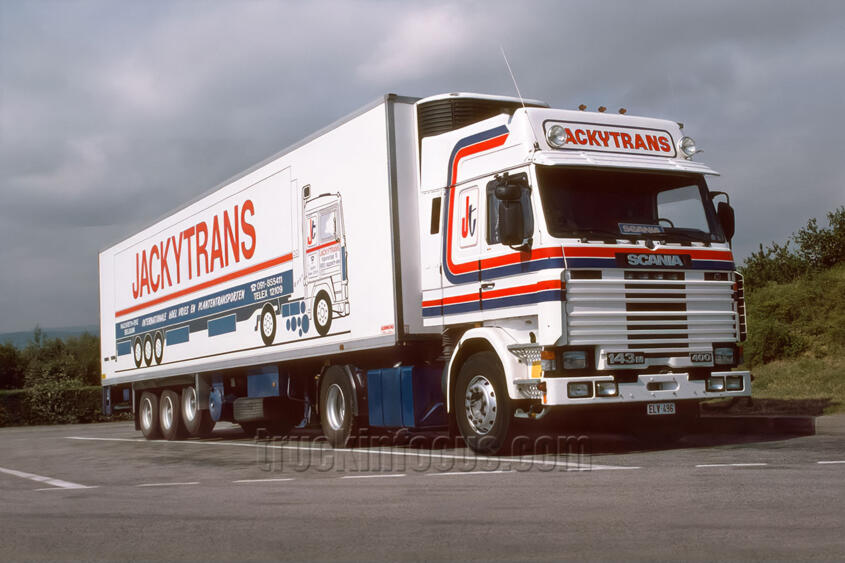
The 3.7-gallon V8 gradually lost importance in long-distance transport. It was replaced by the six-cylinder engine, which was almost as powerful but more economical and 440 lbs lighter. Nevertheless, the V8 remained the first choice for higher tonnages in Scandinavia and Italy as well as for heavy-duty transportation. To maintain the distance to the six-cylinder, Scania increased the power of the V8 to 500 hp in 1991.
Under the name "Streamline", an air resistance-optimized version of the R cabs of the 113 and 143 models was available on request beginning in 1992. The angular exterior of the 2 and 3 series was given a less aggressive appearance by the front design with rounded body corners and five equally wide horizontal openings. Together with standard roof and underbody spoilers, the new design led to a slight reduction in fuel consumption.
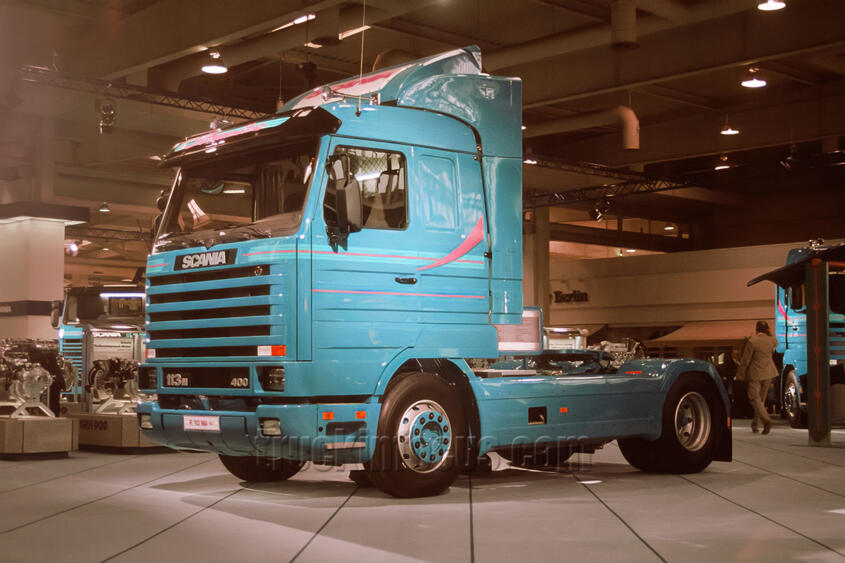
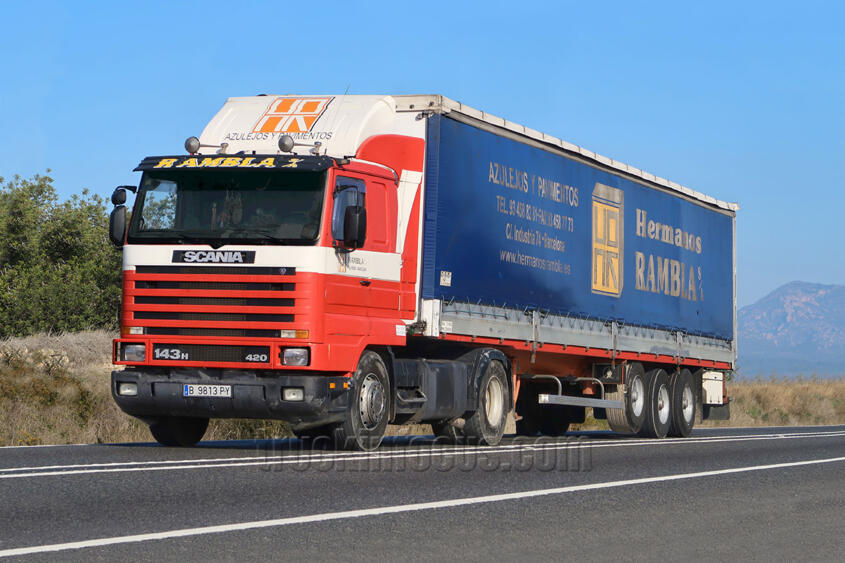
The conventionals also got a bit of streamlining. Instead of six narrow cross struts on the radiator grille, they now had four significantly wider struts. The new spoilers under the bumper also contributed to the new look and presumably also to fuel savings.
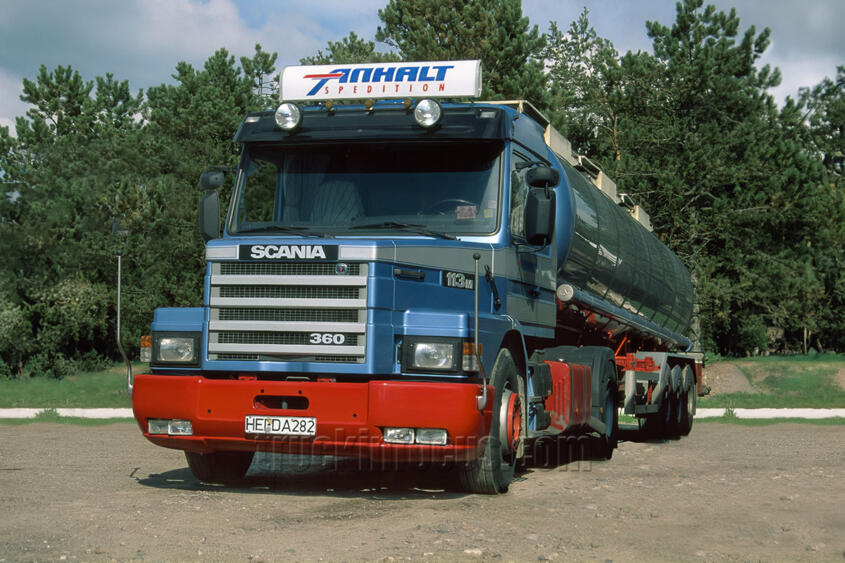

At the beginning of the 1990s, Scania was the fifth largest manufacturer in the industry with an annual production of around 30,000 vehicles. In 1992, a production facility in France was added to the plant in Zwolle in the Netherlands. Further assembly plants were built in Poland and Russia. In 1993, the 100.000th truck since the start of production rolled off the production line in Brazil. It is also worth noting that production was largely standardized internationally. The Brazilian plant supplied engines to Europe and vice versa as required. The technology was compatible worldwide.
Scania's attempt to conquer the USA as a sales market was only moderately successful. Having supplied engines for industrial and marine applications to the USA since the 1950s, Scania attempted to gain a real foothold there in 1985 with the Series 2. Unfortunately, only the 2.9-gallon engine was offered in conjunction with Scania transmissions. The V8 did make it to the USA in the form of two test vehicles, but the American emissions standards would have required extensive modifications, which were not made. In addition, the vehicles were heavier than American products. There was also a lack of a functioning dealer and repair shop network. These were probably the reasons why Scania's involvement was not crowned with success. The introduction of the Series 3 did nothing to change this. Around 750 trucks were sold in seven years, then in 1992 Scania decided to withdraw from the USA, but remained present with engines. Nevertheless, one occasionally encounters newer Scania trucks in the USA, which have come into the country individually through "private imports".
